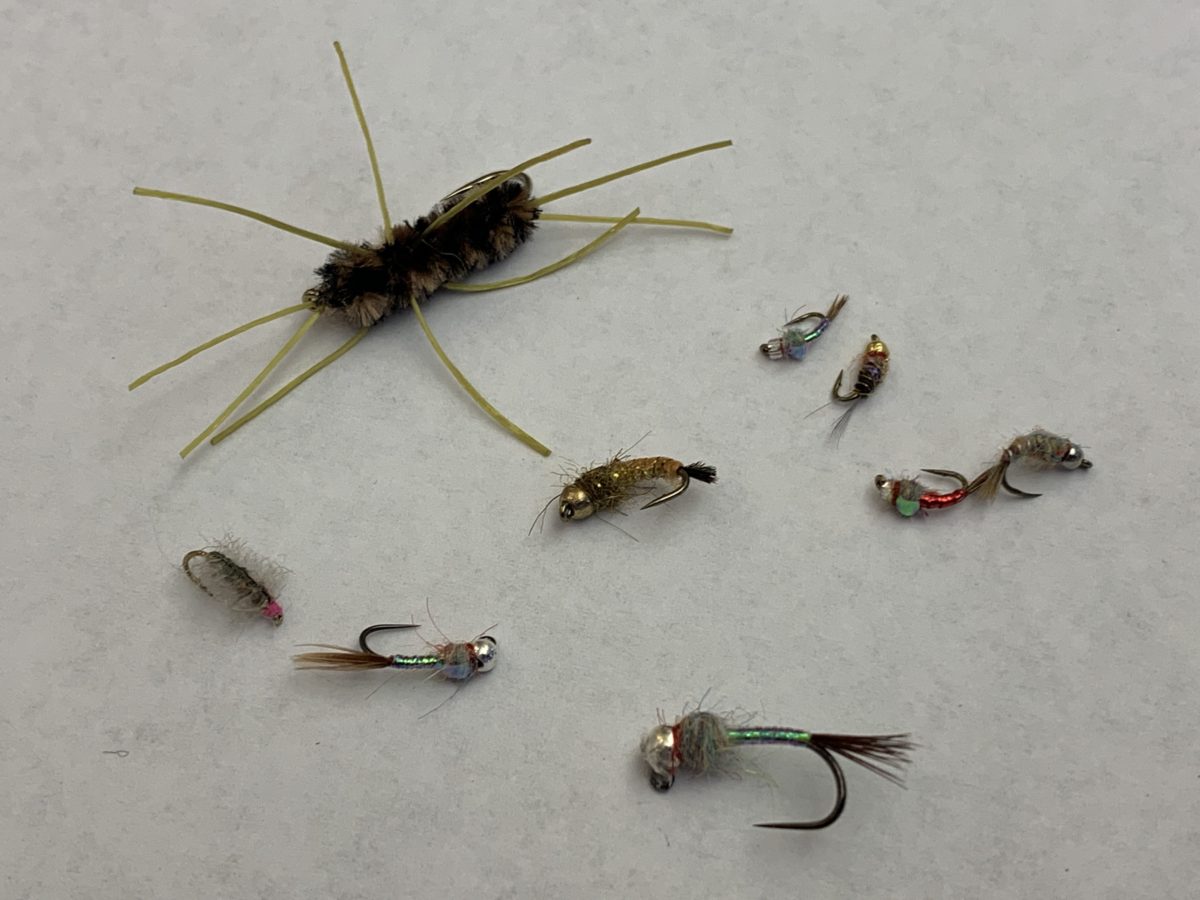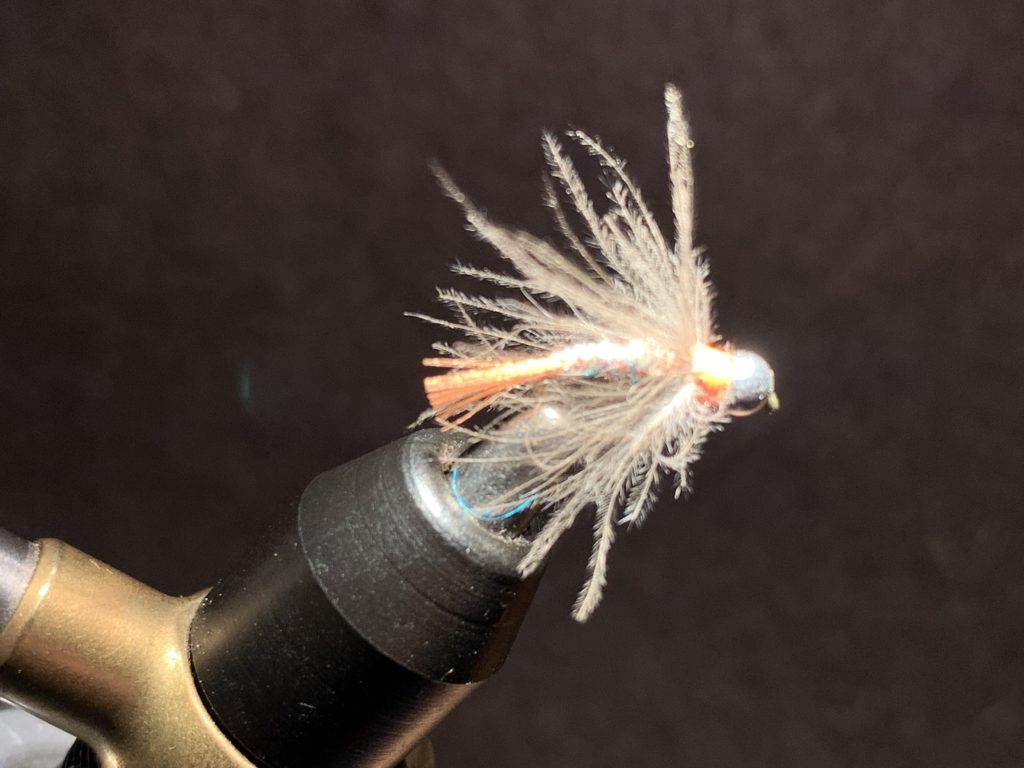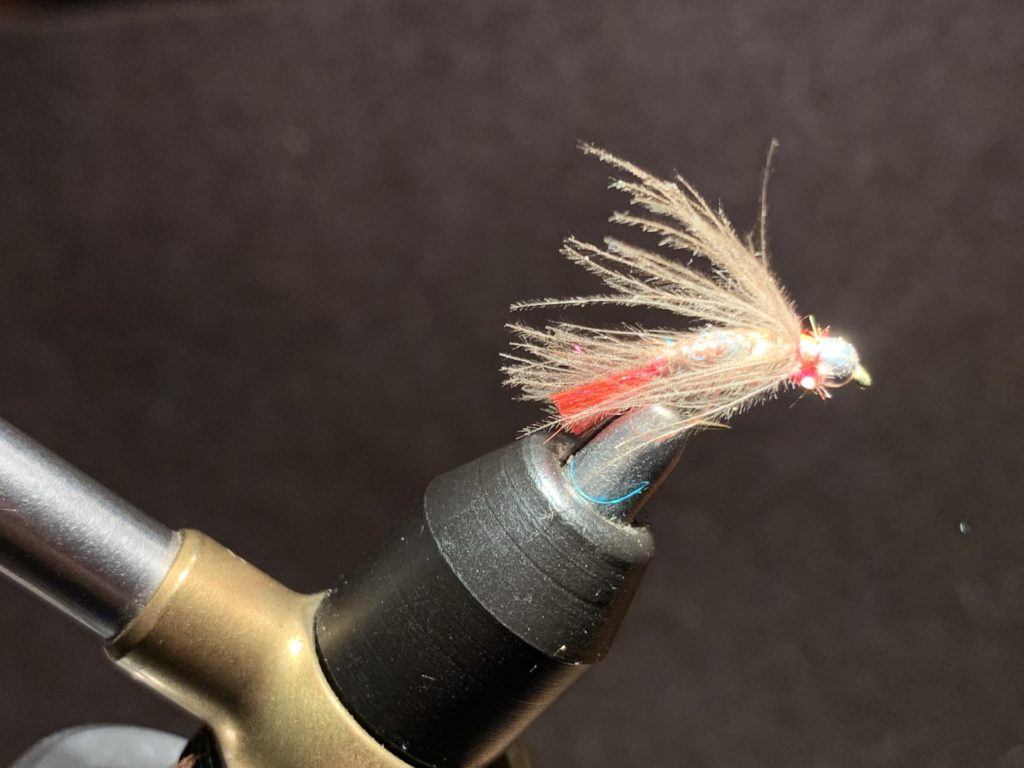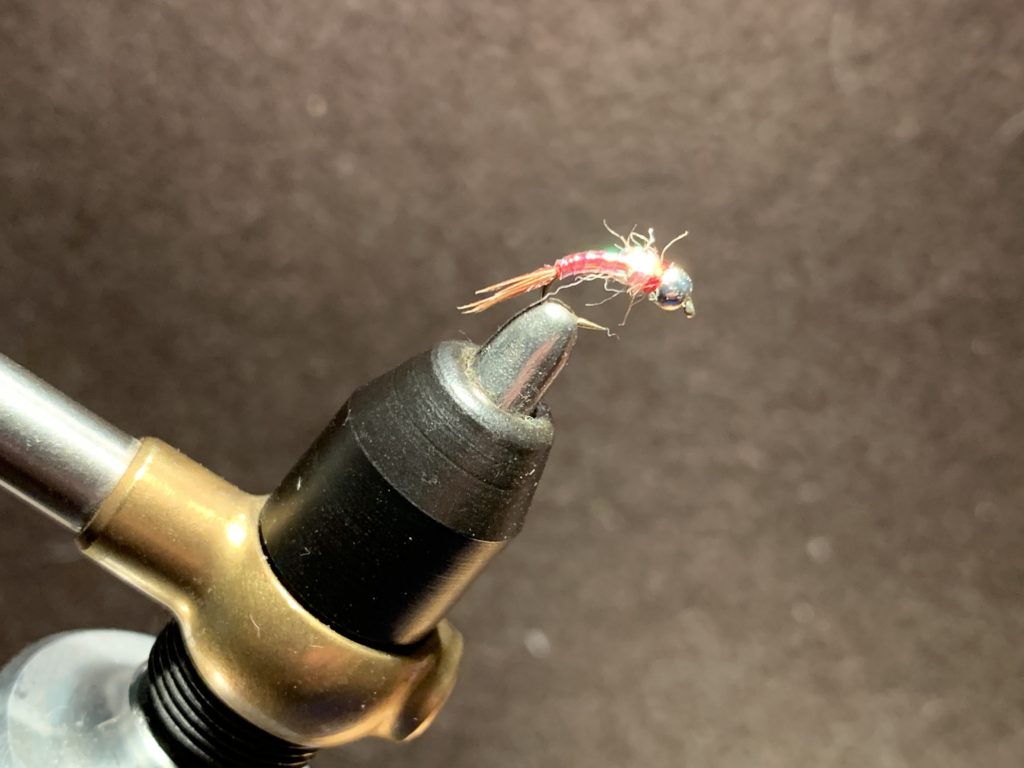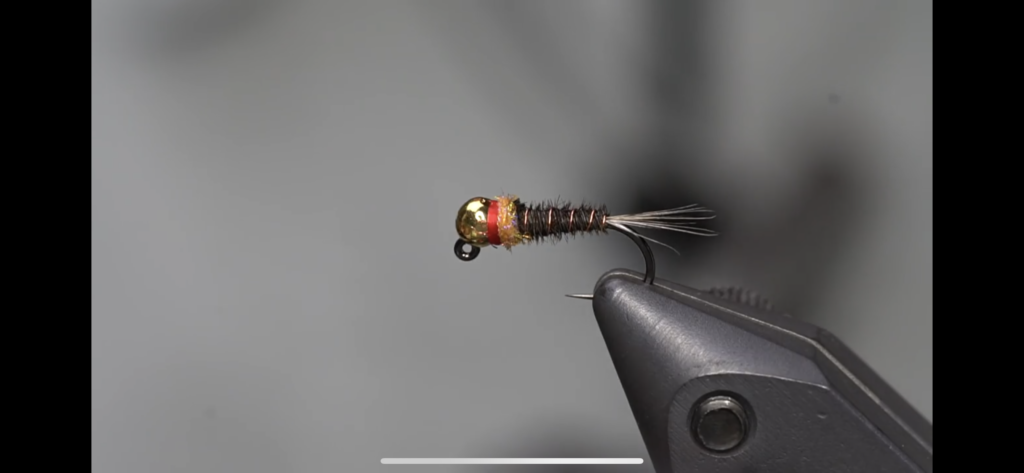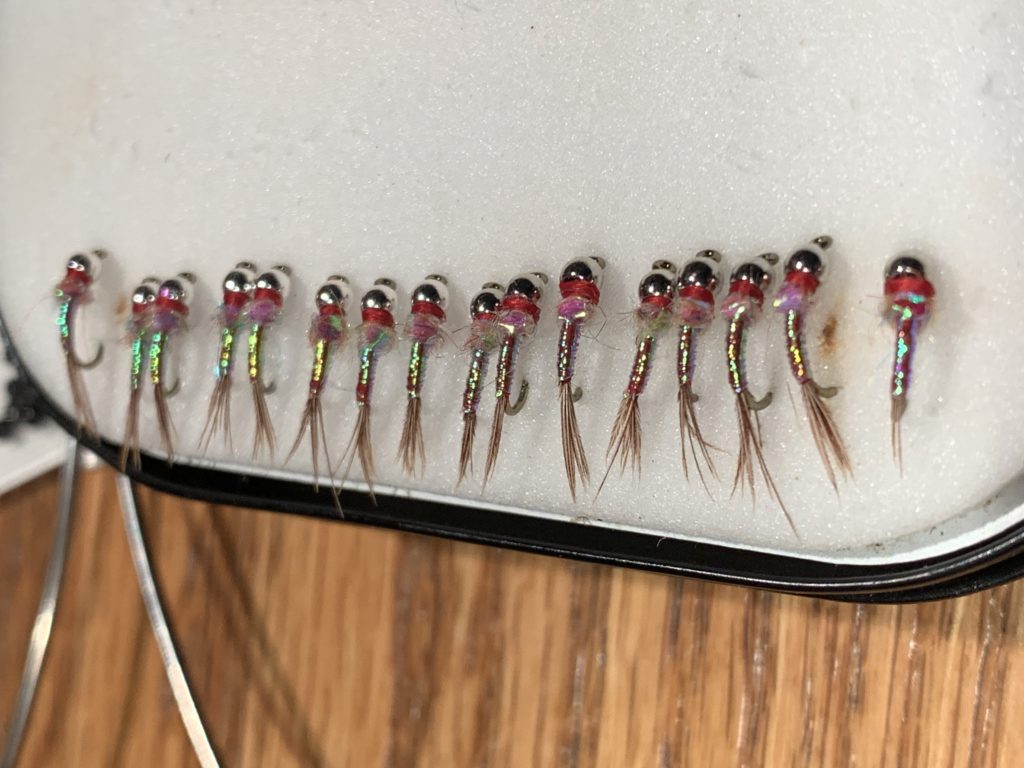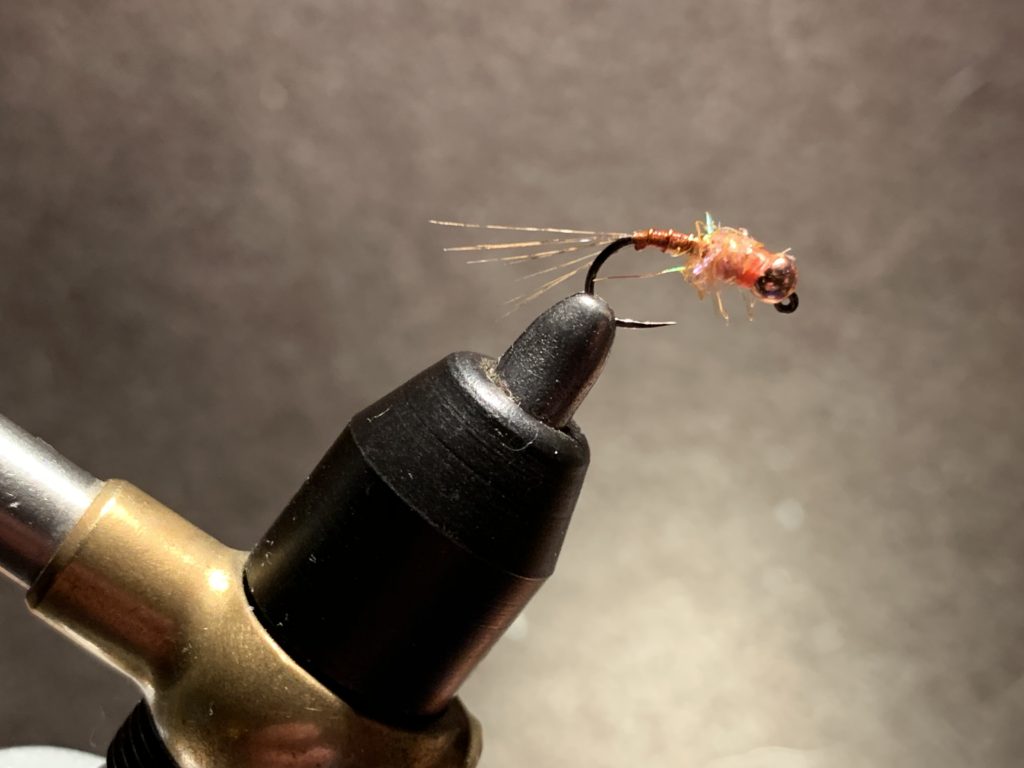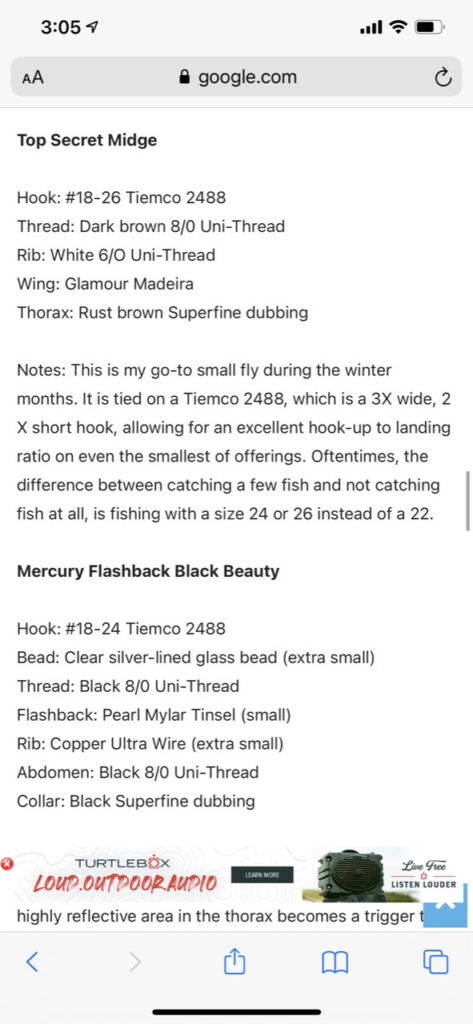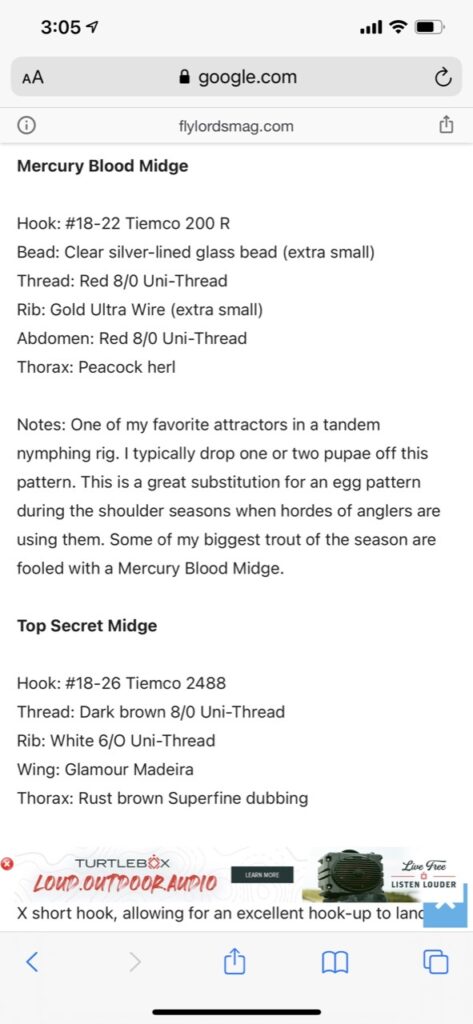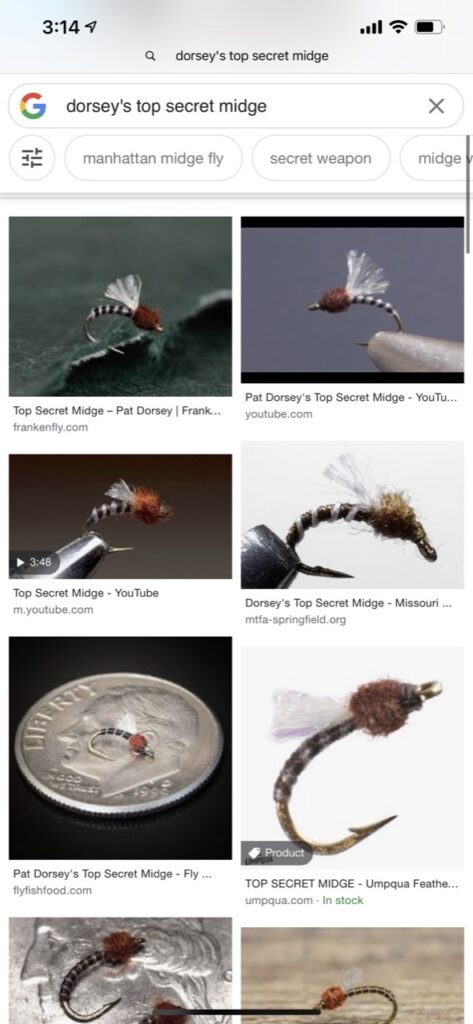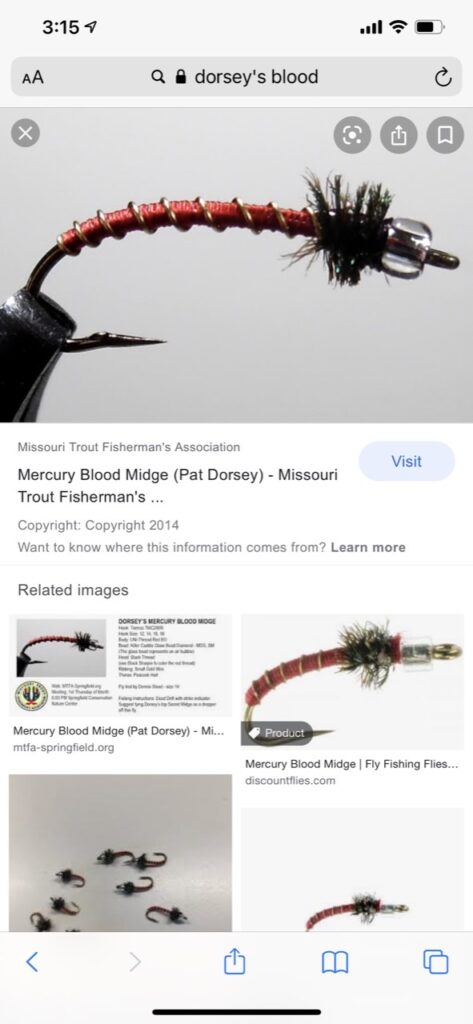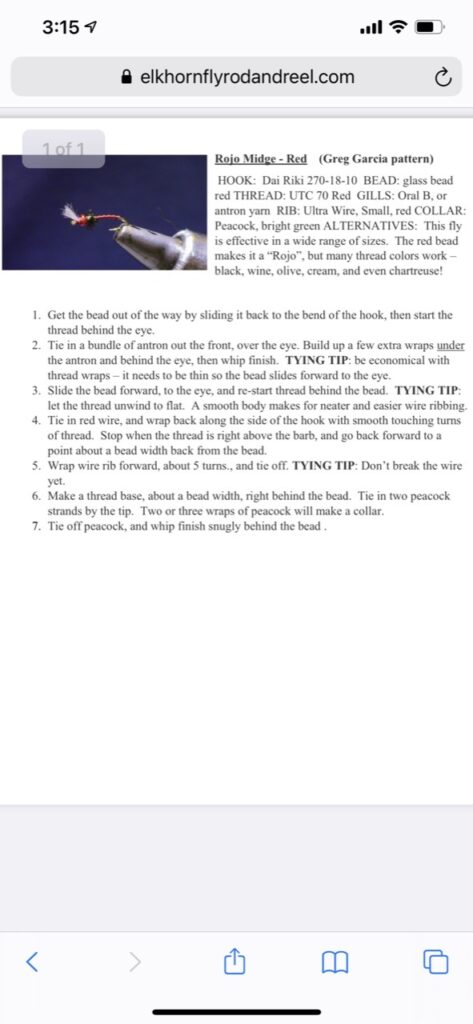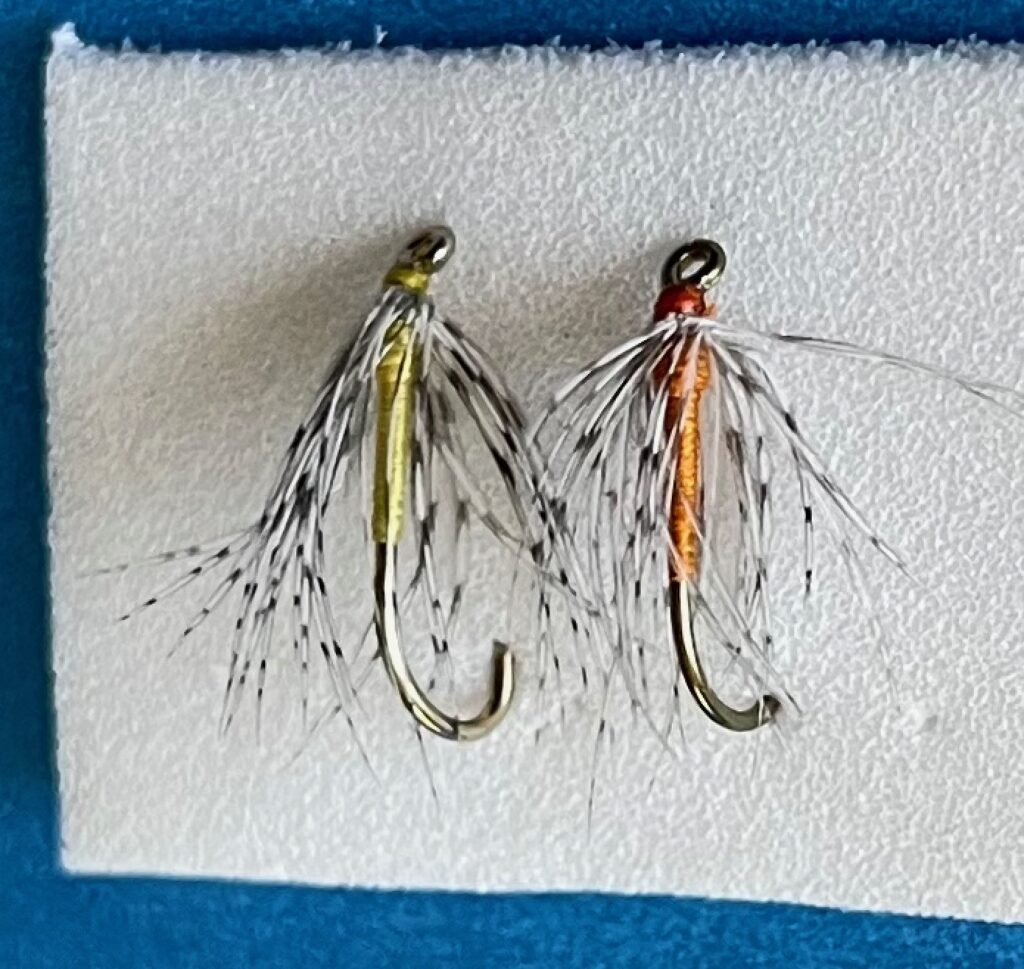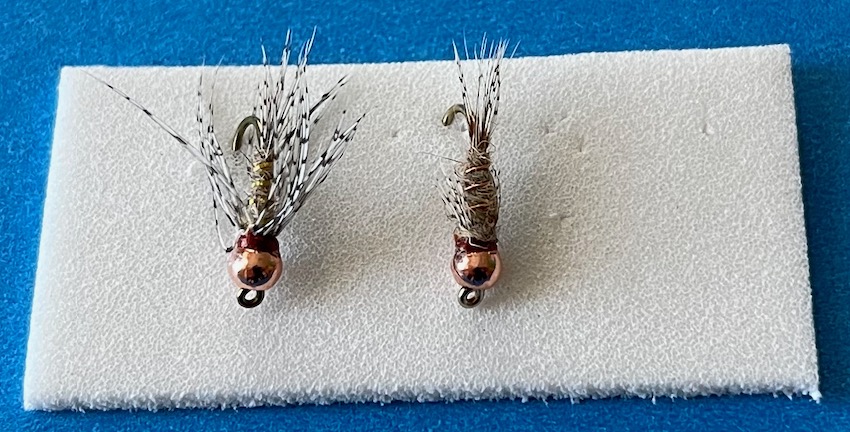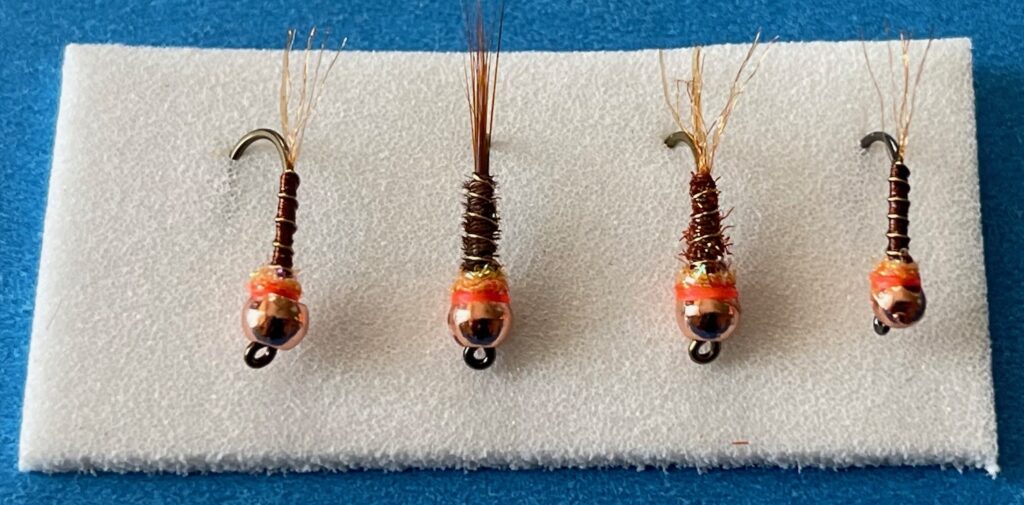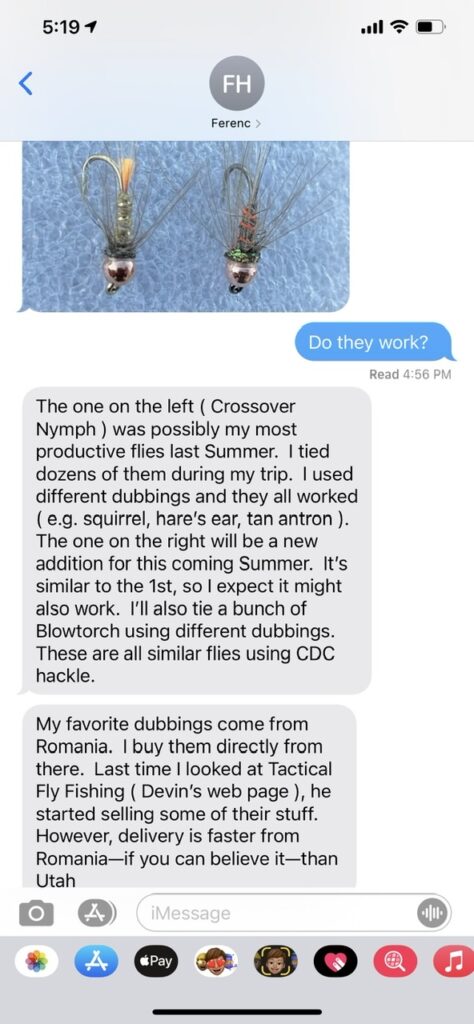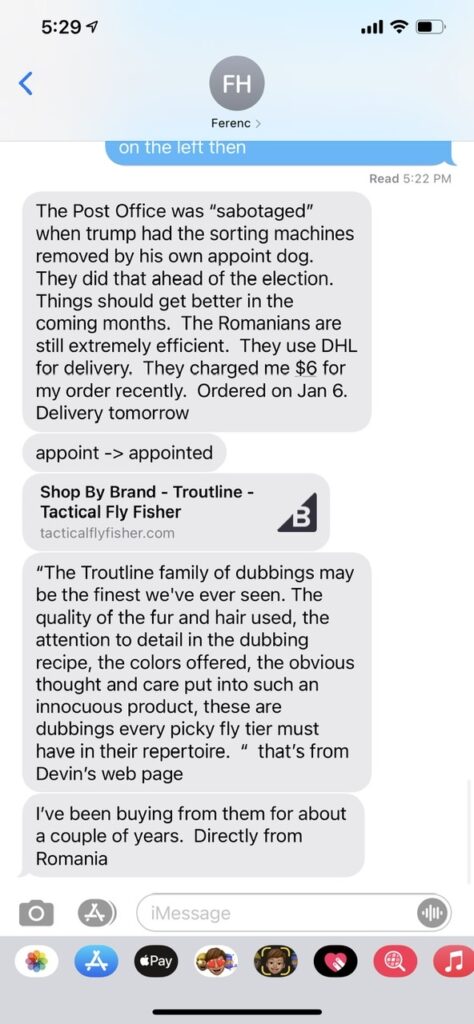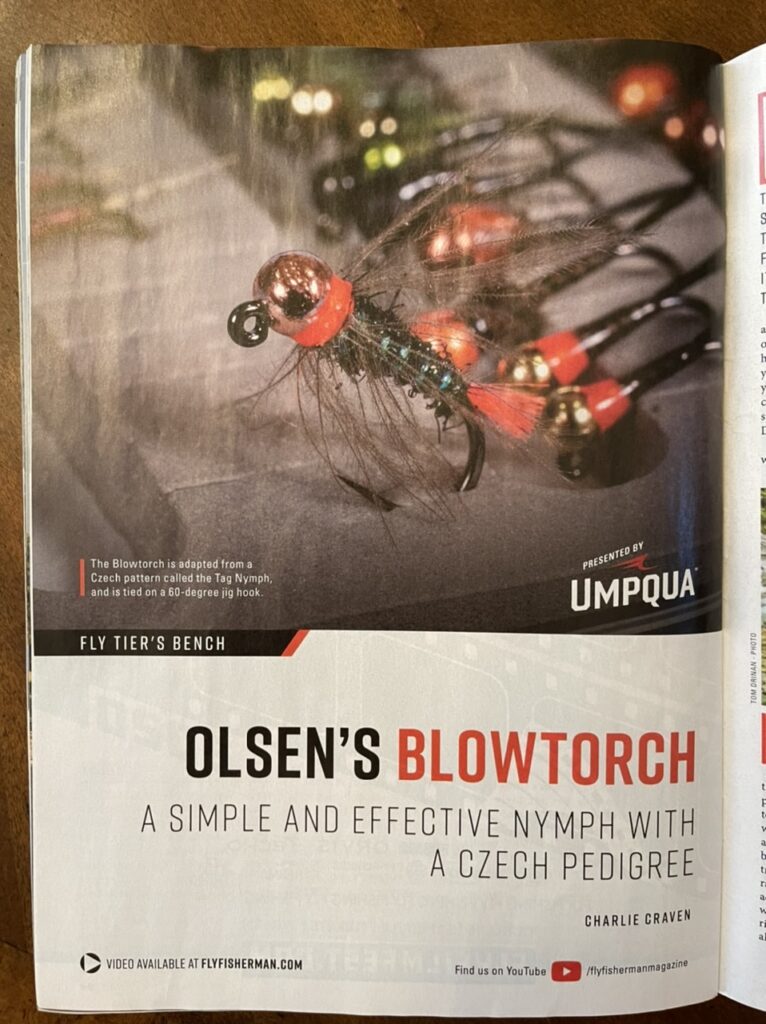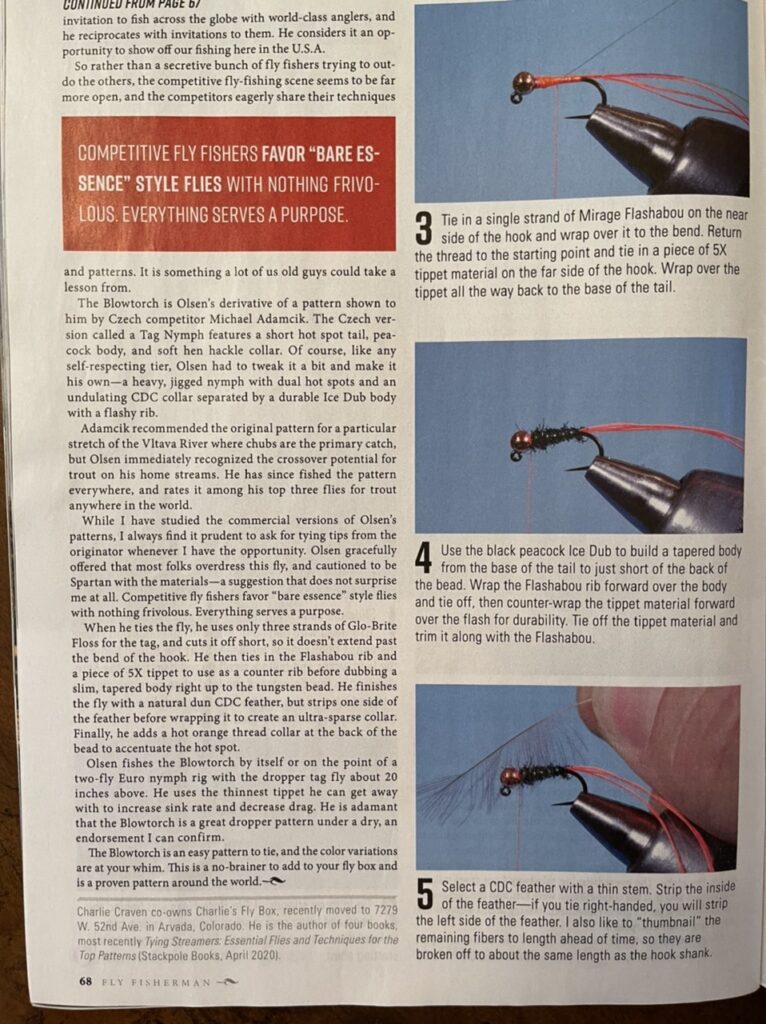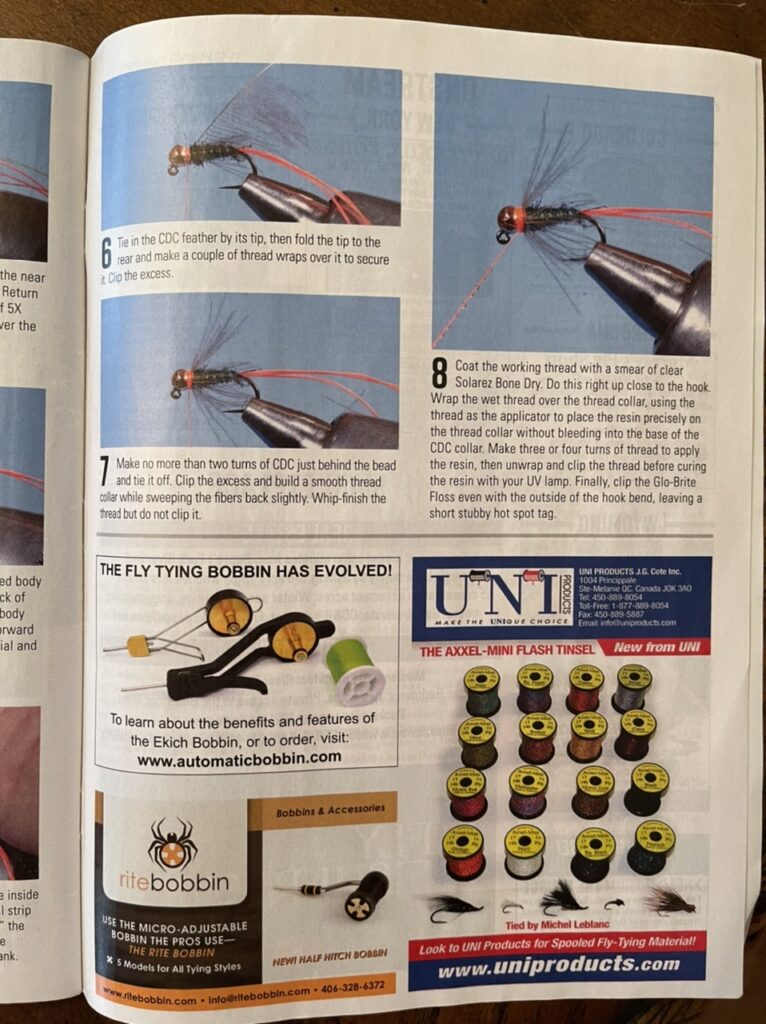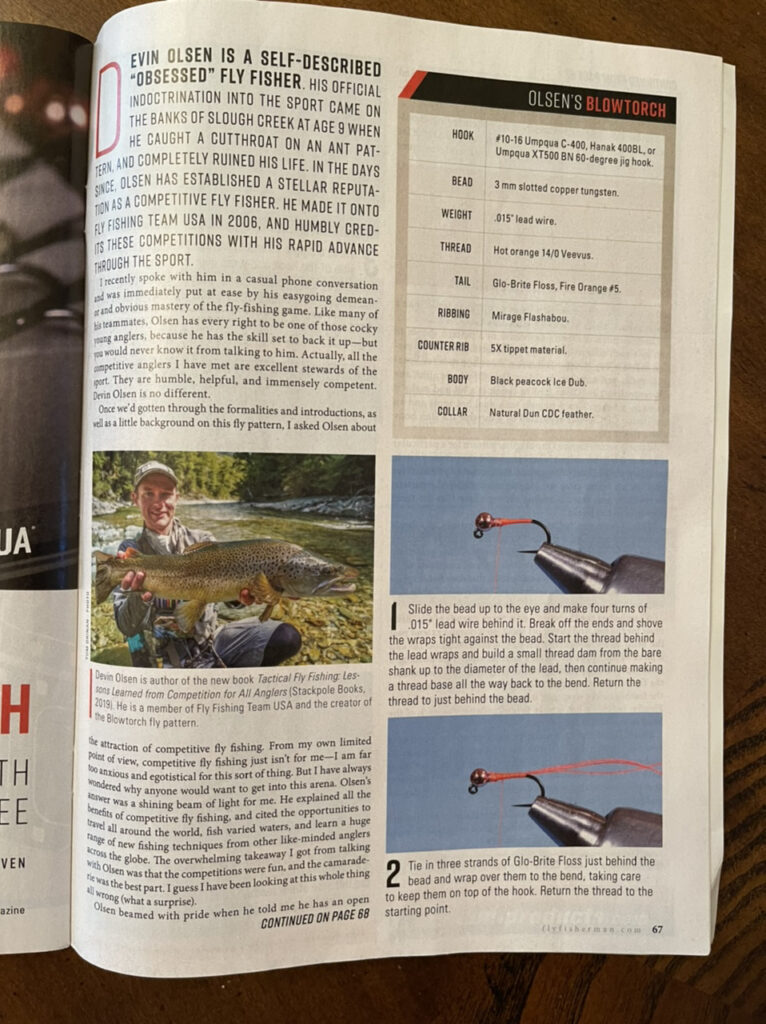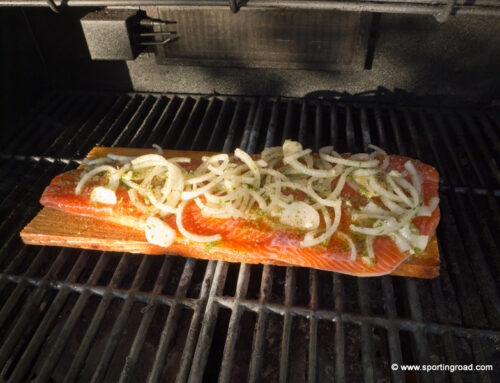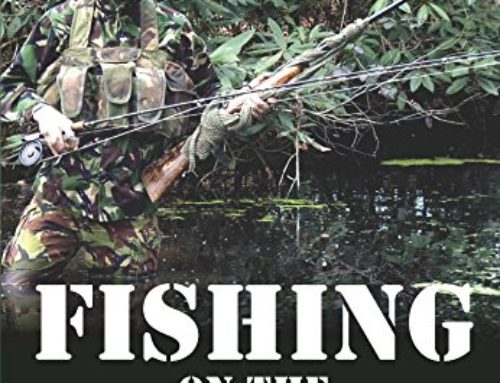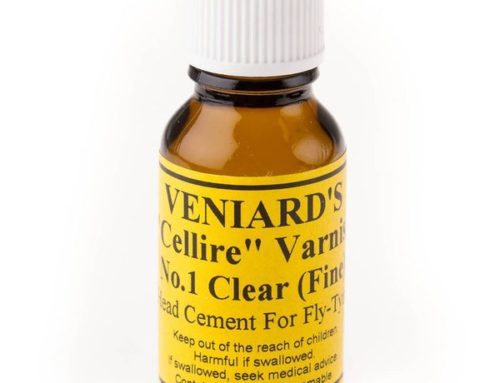My fishing buddy Ferenc has been on a 20+ year long succession of playing around with attractor type flies, in addition to being one of Rim’s students in the nymphing methods of the RS2. His obsession for Desparado flies started with his Desparado fly. Ferenc’s new favorite attractor fly for spring high water conditions is the Finlayson’s Dirty Politician, which has been deadly for Euro Style nymph fishing across the pond and here in the West, especially in Montana. I recently jumped on the bandwagon and started tying the Dirty Politician in pink and orange. We have had days where it is hugely successful and other days where it didn’t work at all. But it is definitely a keeper for the upper fly in my two fly system with an RS2 as the dropper.
Ferenc has played around a lot with Lance Egan’s flies and the whole “tactical fishing” arsenals. Some are effective, others not so much. We like to use the Dirty Politician as an attractor fly at the river below one of our mountain reservoirs when the flow is very high, fishing near the bank. It might be taken for a sow bug or scud, by the lake trout, browns, rainbows and salmon that anglers come to take in the spring high runoff period, where the fish are seeking refuge along the banks. Whatever the fish take it for, it’s deadly when the water flow is high.
Dirty Politician Fly
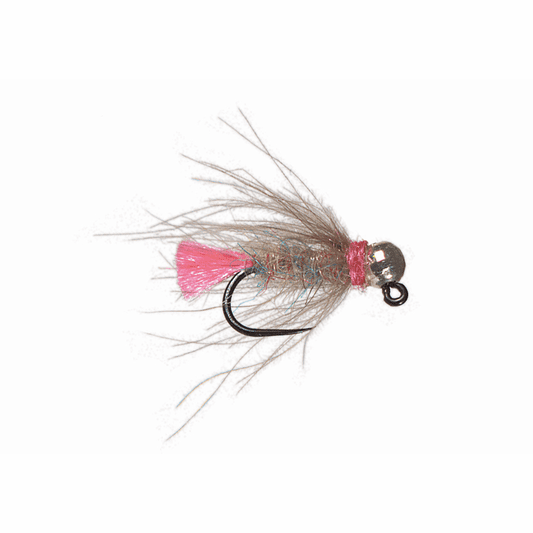
Here’s Ferenc’s recipe:
- – Firehole 516 Jig Hook, size 14 (or similar jig hook such as Umpqua U-Series U555 Jig Hook which I prefer as it is not barbless. I have also used TMC 3769 which has a straight shank and I actually think fishes the best)
- – Silver bead, size 2.4 mm ( 3/32″ )- I used MFC Brass Beads in silver, the next size up also works. Ferenc uses a Tungsten MFC bead. I don’t think it matters. Neither of us like the slotted beads.
- – .010 lead wire, about 10 wraps, pressed into the bead (optionally, use super glue the lead to secure it)
- – UTC Fluorescent Pink or orange thread, 70 Denier
- -Sulky Metallic Thread 6046 for ribbing, or just gold ( or silver ) wire
- – Glo_Brite #2 shade (hot pink ) or orange for the tail
- – Wapsi Sow-Scud Dubbing for the body, Rainbow ( SCD 334 )
- – Natural CDC for veil ( hackle? )
Note 1: I cut a piece of Glo-Brite and fold it over 2-3 times to get the tail thickness I want to achieve
Note 2: I use the same UTC thread to form the collar
During high water he sometimes fishes it with this jigging or Leisenrig lift type of technique. Read this article on “The Nymphing Method that Shocked the Fly-Fishing World” https://news.orvis.com/fly-fishing/nymphing-method-shocked-fly-fishing-world
There wasn’t much in the fishes’s stomach contents during this high water conditions, mostly green moss and a few sow bugs. Rim also ties a special fly for this period of time and his dubbing consists of a blend of off white yarn blended with some gray or olive ( or was it green ) material.
Most of the stomach contents was some green moss, but I also found some whitish, segmented worms about 1/2 inch long, which are mysis shrimp.

So the last few years Ferenc says he had good luck on the Ray Charles-like flies sold in Granby. They have a gray body ( ostrich herl ) with a bright orange head.

I thought that the Dirty Politician would work because of the bright collar and tail with the grayish body ( sow bug dubbing ). The body sparkles as well. It’d stand out in that water. That’s all.
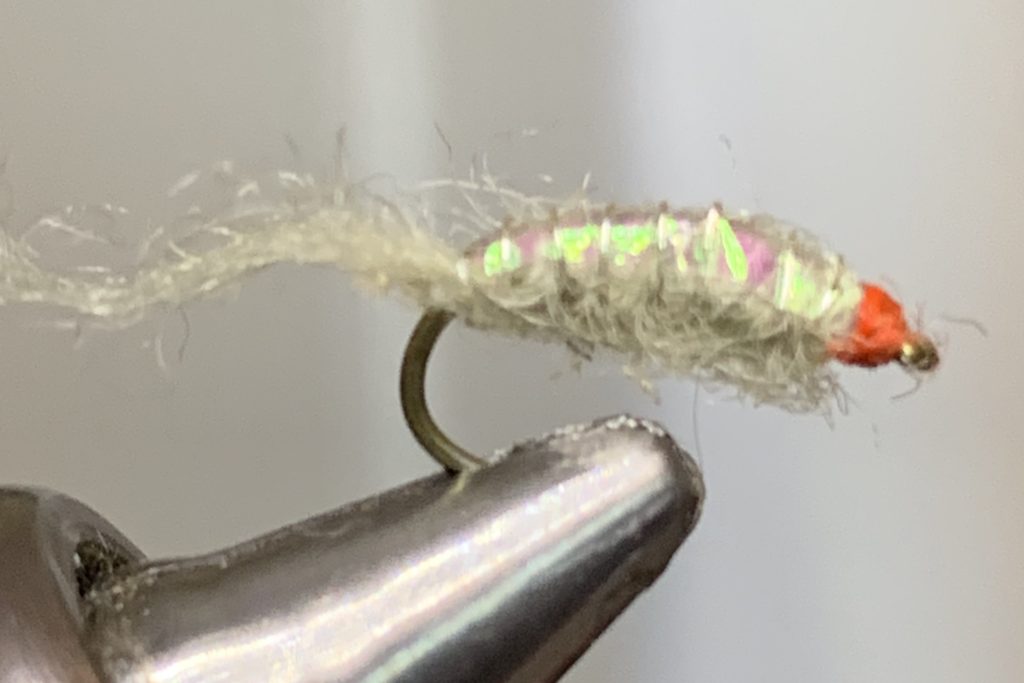
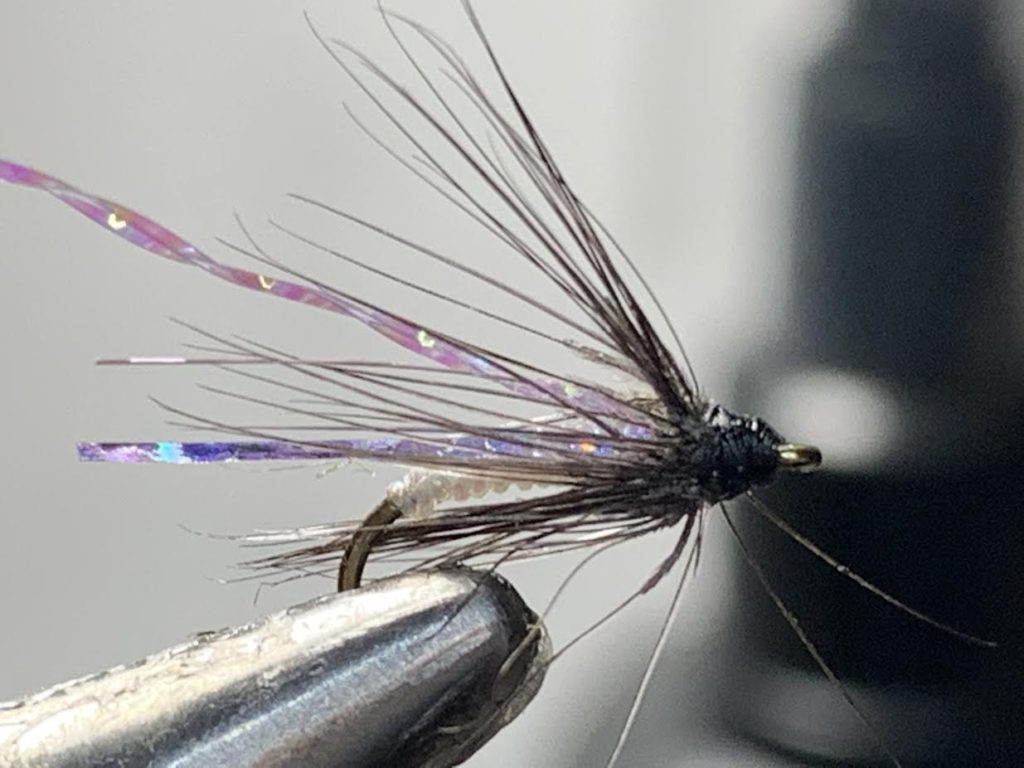
He also likes this Plastique Frenchie in size 18.
The Frenchie is essentially a beadhead pheasant tail pattern with a dubbing hot spot. Some anglers will argue that the hot spot represents an egg while others claim it’s simply a color trigger. Whatever the reason, one thing is for sure: this pattern is likely to turn the feeding mechanism of any lethargic fish.
Hook: Tiemco 3769 or Kona UDF #14, or Umpqua U-Series U555 Jig Hook which I prefer as it is not barbless, problem is that hook only goes down to size 16 and is on the rather large size. I use both types of hooks, nymph and jig. Barbless for the lower fly. I use a barbed hook for the top fly. But I pinch the barb down. The resulting bump prevents the tippet from sliding off the hook.
Copper tungsten bead, 3/32 (2.3 mm)
I also used 8-9 wraps of lead wire, 0.010
Thread: orange or pink
Tail is formed of Coq de Leon, or body material with silve or copper ribbing. Plastique Frenchie using Veevus BQ8 ( body quill 8 ). Pheasant tail body worked equally well. Shrimp Pink for collar. Fluorescent Orange thread.
Hotspot thorax of pink or orange UV ice dubbing and thread hotspot head
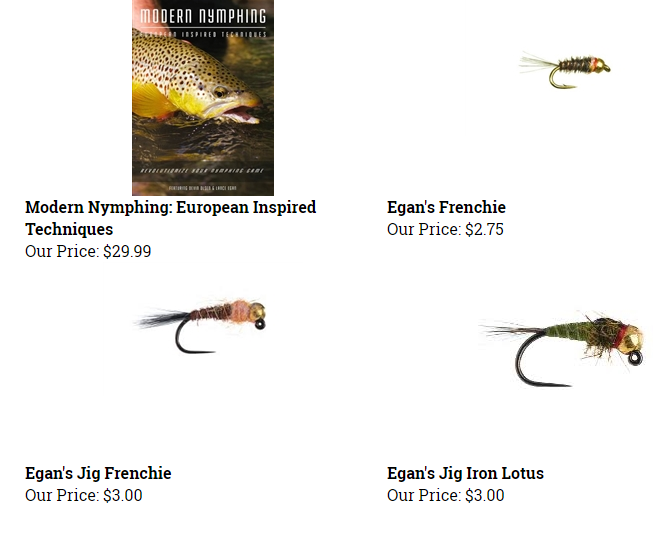
Lightening Bug
Yes, I’ve used the lightning bug successfully in MT. The one that worked best last Summer wasa purpled bodied one. Silver and gold also work periodically.
Here’s the recipe I like best:
Fly Tying: Lightning Bughttps://youtu.be/HfeuS0tBnyU
Materials used:
- Hook: Standard Nymph #14
- Bead: 2.4mm Tungsten
- Thread: Red 70 Denier UTC
- Tail: Coq de Leon Brown
- Body: Holo Tinsel Brown Medium UTC
- Ribbing: Amber Wire Small UTC
- Thorax: Peacock Herl
- Wind Case: Holo Tinsel Brown Small UTC
- Legs: Coq de Leon Brown
Egan’s Rainbow Warrior
This is what many would call an attractor pattern —a flashy pattern designed to get a trout’s attention. When natural looking nymphs don’t seem to work, it’s time to use a pattern similar to the Rainbow Warrior. The Warrior was developed by Lance Egan, who has used this pattern to catch fish across the globe during his travels with Fly Fishing Team USA.
Material List
- Thread: UTC Ultrathread 70 Denier – Red
- Beads: Plummeting Tungsten Beads – Nickel – 3/32″ (2.3mm)
- Tail: Nature’s Spirit Ringneck Pheasant Center Tails – Natural
- Body/Wingcase: Pearl Tinsel – Large
- Thorax: Wapsi Sow Scud Dubbing – Rainbow
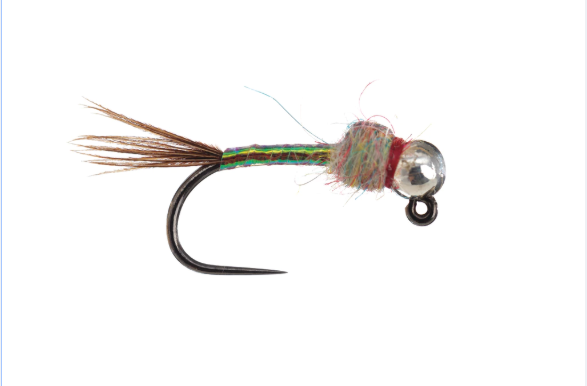
And for Montana, Ferenc is going bonkers for Pat’s Rubber Legs, ones he has been purchasing rather than tying over the last few years. No bead on them. Legs are olive colored. The chenille is the same.
which is a stone fly pattern that he uses as an attractor pattern there.
He also is experimenting with using UV resin when making certain flies. Here’s an example:
Lance Egan’s Thread Frenchie — EURO NYMPH
The competition fly fishers are now using UV resin ( which they cure with UV light ) for perdigon type flies, which he is also experimenting with using.
THREAD FOR FLY TYING HAS CHANGED
We just have more choices now as the Internet makes it possible to market to broader audiences.
I like Veevus for their color variety . They’re pretty strong and are thin.
Benecchi is very strong material and is very thin. It didn’t break even when the point of the hook scraped it during tying.
I also like their spools which have this micro gear feature to easily loosen or take up thread.
Semperfli’s nanosilk threads are slippery, but extremely thin and possibly the strongest I’ve come across so far.
UTC because its easier to split their threads to insert dubbing or CDC Danville has some interesting colors. I mostly use their brown for some flies I tied in Montana ( $3 Dip, some Frenchies ) I rarely use UNI’s any more
So they all have their uses and it’s just fun experimenting with them.
And he is using Giorgio Benecchi thread for tying, which is strong and thin:
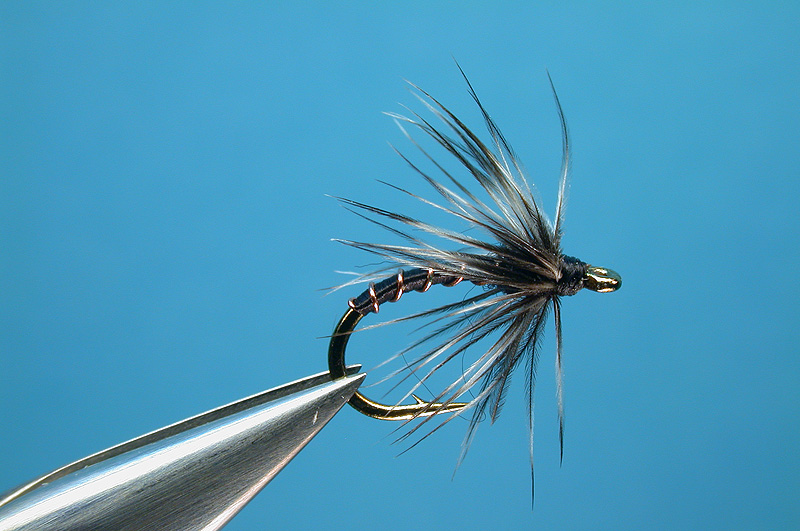
Next thing you know, he’ll be tying the tube midge, which is the hottest fly of the week at many metro area shops:
Landon Mayer’s Tube Midge

The genius of this fly is that it has a segmented body that is still translucent just like the natural midge larvae.
- Hook: Dai-Riki #125 Size 18-22
- Body: Small size Ultra-Wire Red, Copper, or Black inserted into Clear MicroTubing
- Thread: 8/0 – 12/0 Black
- Gills: Clear Antron
1) Cut a 4” length of Ultra-Wire. Insert into the Micro-tubing leaving about 1” out both ends. 2) Secure hook in vise. Start by making two wraps of the bare wire at the hook bend. 3) Slide tubing to the hook shank and wrap tubing-covered wire around hook shank to just behind the eye. 4) Start thread just behind hook eye and secure wire and tubing. Trim excess. 5) Form a compact head with the thread. 6) Tie in a small bundle of clear antron on top of head extending out front and back. 7) Fold Antron overhead extending over the hook eye and secure with one layer of thread. Trim to length. 8) Whip finish and trim thread. Finish with Sally Hansen nail finish on head and on bare wire wraps only. Be patient when trying to insert the wire into the tubing – that’s the hard part. This little midge can also be tied with a tungsten bead. Fish dead drift under an indicator or as a dropper. Landon likes to leave the gills long in case he wants to dress the antron ends so that it will suspend in the surface film during an emergence.
And he he like the Ray Charles-like fly for our favorite stretch the Colorado during the month of June when flow is high:
- – Hook: Dai-Riki #305, size 14, or equivalent ( e.g. Umpqua U002, size 14 )
- – Lead .010
- – Thread: UTC Fluorescent Fire Orange, 70 Denier
- – XS UTC Copper Wire for ribbing
- – Veevus P01 Pearl Tinsel, Large for shell back
- – UTC Burnt Orange ( BNT. Orange ) Antron Yarn from spool for tail
- – Two Grey Ostrich Herl Fibers for body
- – 12-14 wraps of lead on hook
- – Use Super Glue to secure lead
- – Cover lead with thread ( Picture 1 Below )
- – Flatten lead to form a flatter sow bug body ( Picture 2 Below )
- – Tie in copper wire
- – Tie in some Antron fibers ( say, 15 ) for tail
- – Tie in tinsel
- – Tie in the tips of the ostrich hearls and wrap thread behind the hook’s eye
- – Wrap ostrich herls forward and tie them off about 1/16 of an inch behind the eye
- – Fold tinsel over the back of the fly and tie it off behind the eye
- – Rib the body of the fly ( about 5 wraps ), then tie it off behind the eye
- – Trim tail to about 1/4 inch long
- – Whip finish and form a uniform orange head using thread
- – Apply head cement ( Picture 3 below ); OPTIONAL: cover tinsel with UV Resin and cure with UV light
On Wet Fly Fishing
This is the setup and method Ferenc is trying on the Madison:
RIO – HOW TO FISH A SOFT HACKLE ( with Simon Gawesworth ) https://www.rioproducts.com/learn/how-to-fish-a-soft-hackle
One of his reels is set up just for this and he’s also taking reels with level lines, WF floating lines, etc.
He’s also fishing Shop Vacs in Montana.
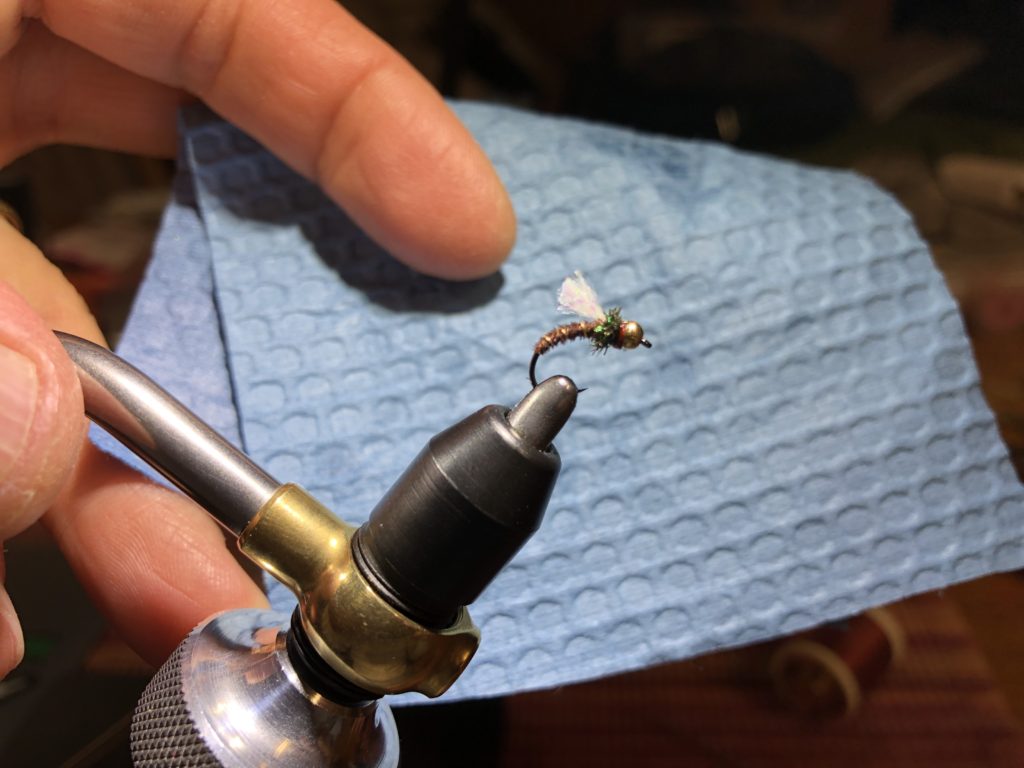
Lance Egan’s Red Dart without the brown saddle hackle collar. ( Tim Flagler at the show told me that they worked just as well without the collar. ) I’ll also tie some with the collar and compare results.
I’m tying these for Montana. Supposedly it works when others might use Prince Nymphs.
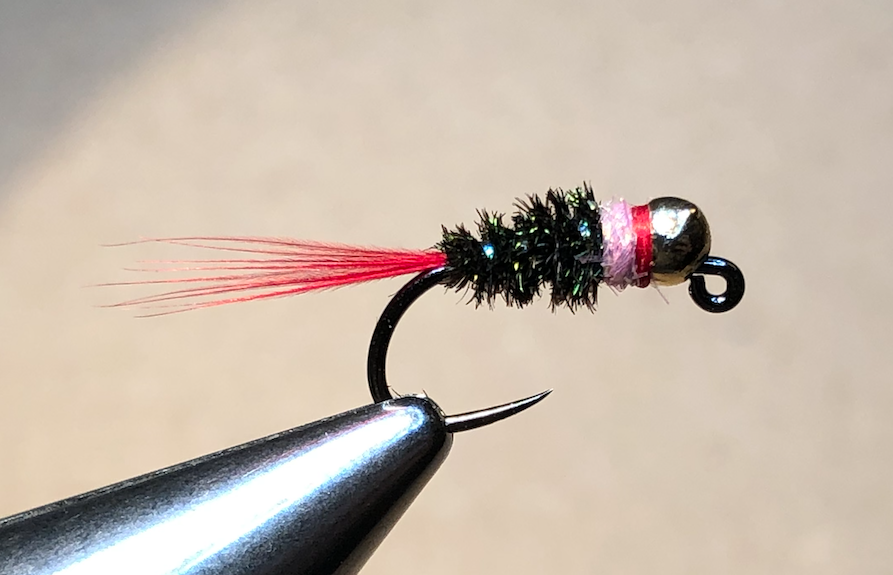
Mayer’s Mini-Leech
I do the same as with any other fly. So yes, lead putty on the line. I’ve gotten fish dead drifting the leach and also when very lightly jerking in.
I had one on the lift at the pump house. I got most of my fish on the black leach. Some on the brown. I used the following for tying instructions:
Landon Mayer’s Mini-Leech by [ non-jig version ]
tightlinevideo
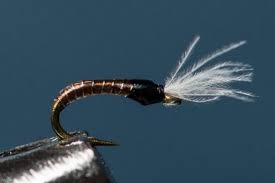
Phil Iwane’s No Mercy Midge is very similar to Dorsey’s Top Secret Midge and Phil recently tied with Rim Chung at Orvis. Neither Ferenc or I have tried it yet though.
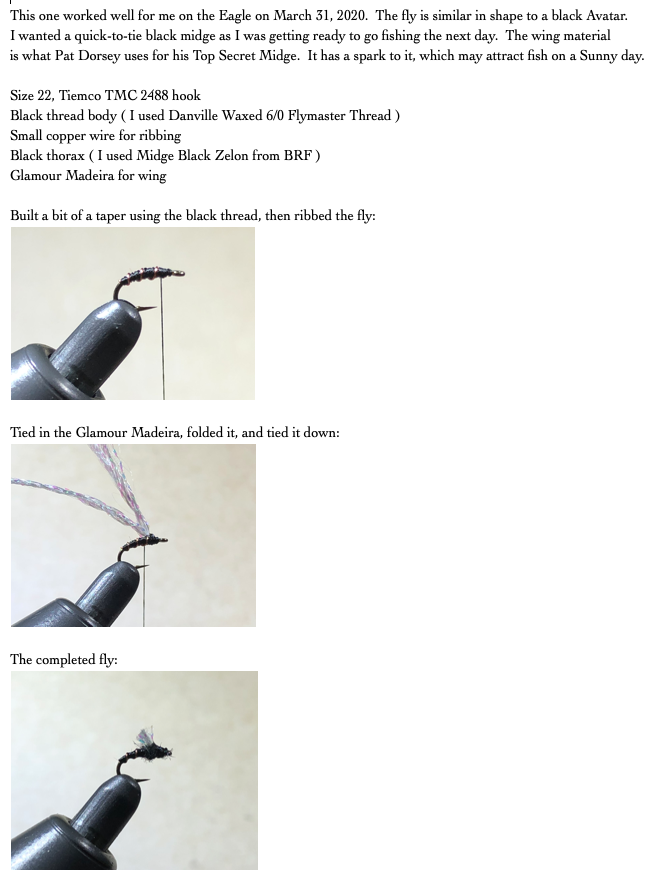
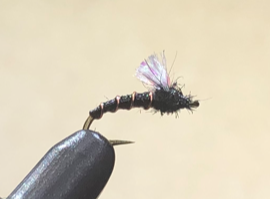
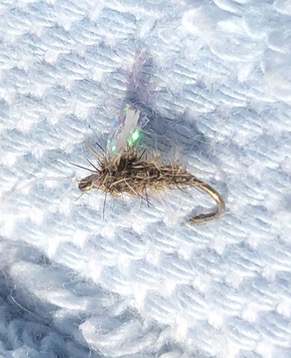
https://www.troutline.ro/troutline-mad-rabbit-dubbing
“spiky material with short fibers delicate enough to be used for medium and small flies”. The short fibers make the fly spiky like that, which is the look I was going for. Used dubbing wax to prevent the dubbing from sliding on the thread. I’ve used the Glamour Madeira for wing again.
Vices from South Africa
http://www.jvice.com/index.html
Mop Fly

I only ever had luck on the yellow Mop Fly. Learned about it from a George Daniel video.
Tried it below Shadow Mountain during high flow when the river was off color ( kind of light
coffee color ). George recommended it for off-color rivers. It worked exceedingly well
below Shadow Mountain. Tried it on the Eagle a few days ago for a short time. No luck.
The Mop Fly [ about 9:34 into the YouTube Video ]
Tying “Junk” Flies for High Water Conditions: Three Simple Nymph Patterns – by George Daniel
Though, I tried different colors ( e.g. light green, tan ), the only one that caught fish for me was the yellow.
Here’s my version, which nailed a lot of fish in June:
- Fulling Mill 35045 Jig hook, size 12
- Size 7/64 Silver slotted tungsten bead
- .015 ( or .020 ) lead wire to prevent bead from spinning
- Cream ( or yellow ) colored Danville Thread to cover ( paint ) the shank of the hook
- Yellow Mop “noodle” cut from Car Wash Mitt
- UTC Fluorescent Fire Orange thread for hot spot
I only tie in the lead wire to keep the bead from spinning. So about and 1/8 of an inch of lead is used inserted in to the bead’s rounded slot.
Super Glue is used to secure the lead and bead.
Wrap the shank of the hook with the Danville thread so that the hook doesn’t stand out as much in the finished fly.
Secure the mop noodle with three thread wraps near the bend, then wrap the thread forward on the shank behind the bead.
Lift the mop noodle and brush the thread with Super Glue. Lay the mop noodle on top of the shank and tie off behind the bead.
Snip the excess noodle diagonally behind the bead, so that the bead is completely exposed.
Switch to the UTC thread to create a hot spot behind the bead.
Use the Super Glue ( or similar ) brush to cover the front of the mop noodle to prevent if from fraying.
for larger hooks I found the Mustad Signature line quite good and inexpensive. Another good one is Kona… from China. I’ve used a lot of them ( UDF and WFN lines ) with no issues. But I only get them in sizes 14, 16, and 18 for Montana.
For Montana, Ferenc has been tying soft tacos, stoneflies, lots of names, midges, and even some dries. At 9 PM there’s lots of Cadis activity in the shallows. Large browns move in and feed inches from the bank. I also did well on pill morning done dry/summer. Pale morning sparkle duns are particularly good. X caddis as is an iris caddis. Frenchy’s and crossover nymphs were consistently the latter is Devon Olson ‘s. Frenchy’s come in three different styles one of the plastique Frenchy, pheasant tail Frenchie, ice dub Frenchy, and and plastique Frenchy on a Jig hook. The first three we tied on our 50 NP-BR94840 mustard hooks size 14. I’ll have dozens with me as these are reliable producers. A couple of soft hackles I have tied a bunch of and these two works from our past trips, so I’ll tie a couple dozen of each. I copied local patterns that worked.
https://tacklevillage.com/fly-tying-hook-database/
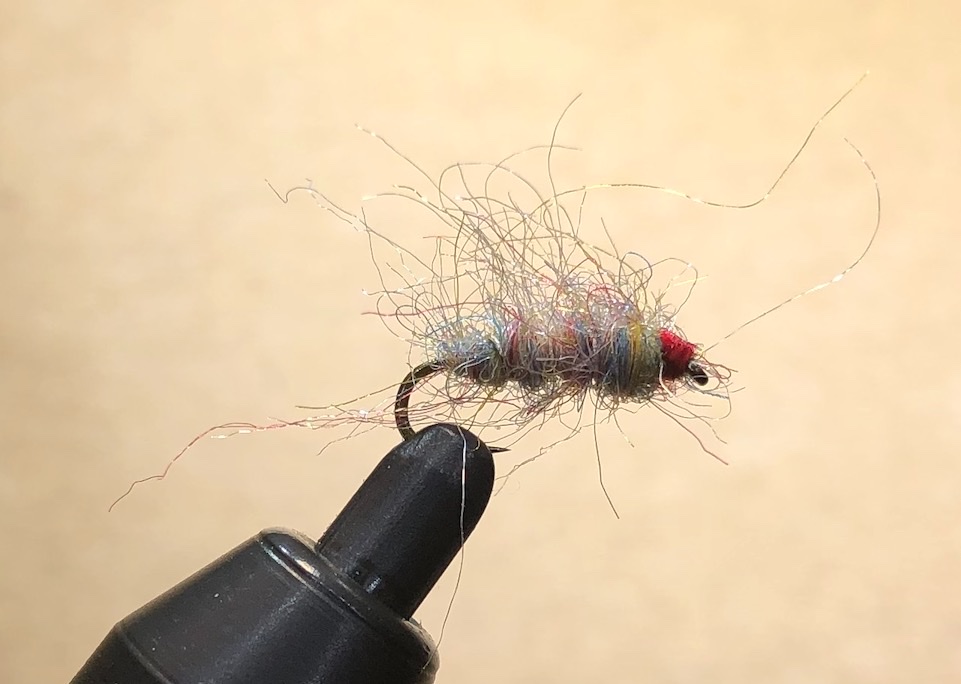
Ferenc hasn’t turned to a Panther Martin yet, but we tease him that this is coming next.


